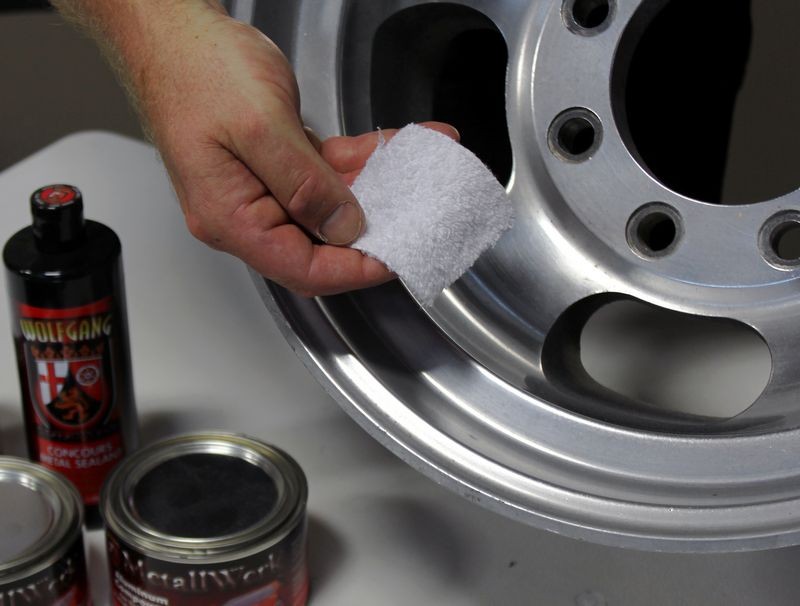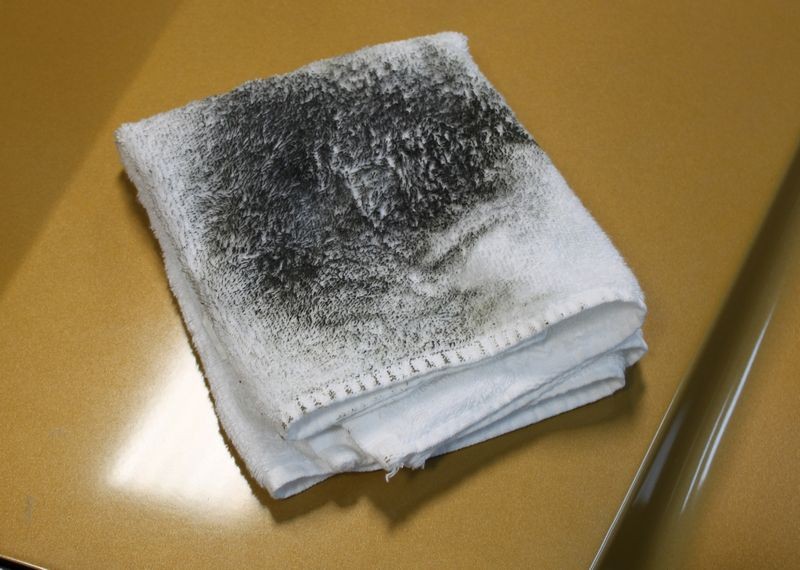After 3 rounds of buffing (using Menzerna 400) I took a towel and put some compound on by hand,rubbed it in and still came up with black residue on the towel.
The color of the car is Burnt Amber (one of the original colors.)
What could the black residue be ????
There is no clear on the car,so it is all paint.
As someone posted, I cover this in my article here,
The Secret to Removing Oxidation and Restoring a Show Car Finish to Antique Single Stage Paints
Single Stage Metallic Paint = Difficult to Restore
Single stage,
non-metallic paints like the above paint on the Ranchero are actually very easy to fix because the problem is for the most part just topical, that is the problem is just on the surface. All you have to do is remove the dead paint off the surface and if there's enough paint left then it's just a matter of polishing what's left to a high gloss. The most difficult paints to restore are single stage
metallic paints.
The reason single stage metallic paints are the most difficult to restore is because not only does the paint itself oxidize, that is the resin used as the binder, (generally some type of seed oil like Flaxseed oil or Cottonseed oil), but also the aluminum flakes embodied
inside the paint oxidize. This is where the problem lies.
It's a problem because the entire exterior surface of each individual aluminum flake oxidizes over time but you and I can only work on the surface of the paint and thus we can only work on the portion of the flake that is exposed at the surface level. Any portion of each aluminum flake that is below the surface and is surrounded by paint cannot be cleaned or polished so there's no way to remove the oxidation on the portions of the flakes
inside the paint.
Oxidized Aluminum Turns Black
With metallic single stage paints, oxidation can show up as a darkening effect on medium to light colored paints because the aluminum metal flakes embodied inside the paint will stain or discolor the paint with a
grayish black color.
If you’ve ever polished uncoated aluminum then you’ve seen this grayish black color coming off the aluminum and onto your polishing cloth as you work a metal polish over it. This same type of oxidation is taking place to the aluminum flake inside the paint.
Polishing Uncoated Aluminum
Oxidized Aluminum Comes Off Black
Wolfgang MetallWerk™ Aluminum Polishing System
In the same way you see the black residue coming off the aluminum wheel onto the piece of white cotton terry cloth material above, when working on metallic single stage paints you will see black residue coming off the paint and onto you applicator pads, buffing pads and wiping towels.
This darkening effect can take place even at the same time the surface of the paint itself is turning
chalky white. This is because you have two different substances oxidizing, both the paint and the aluminum flake, which both are oxidizing at the same time. The paint oxidizes white and the aluminum flake oxidizes black.
Then further down the article you'll see this to tie together with the pictures I posted above...
After approximately 12 hours of soaking in #7 Show Car Glaze, we're ready to wipe off the first application off this 37-year old paint.
Look at the paint surrounding the towel...
In the picture below, note how after just one well-worked application of #7 the finish is now more smooth and clear and the color is more vibrant and even.
Look at the color of the residue coming off the paint and onto the white terry cloth towel; it's
black. The single stage paint is butterscotch gold.
Question: Where's the blackness coming from?
Answer: The
aluminum flake.
One of the benefits that we enjoy when car manufacturers switched over to basecoat/clearcoat paint technology is there's a clear layer of paint covering over the color coat of paint and this seals the paint and keeps it from oxidizing and deteriorating. This enables metallic finishes to last for a long time without oxidizing and this is why you no longer see any black residue coming off modern metallic finishes.
Back in the old days the flake was aluminum. Today it's a type of plastic or mylar, thus no metal oxidation problems.
Of course, this is one of the early reasons there was a switch to basecoat/clearcoat, by sealing a single stage aluminum flake basecoat you could prevent metal oxidation.





